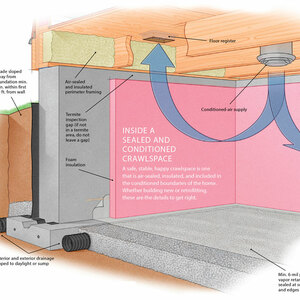I understand that there is a maximum number of electrical paths that can be bundled together (in close proximity) before negative performance aspects can take place. But I wonder how this might be applied to speaker wire and current along the conductors given that speaker resistance (impedance) varies by frequency.
For instance, let’s say you have a rectangular room of 15′ by 30′. Along one short wall are three 8-Ohm speakers, then along mid-section of the two long walls is an 8-Ohm speaker, and the other short wall has two 8-Ohm speakers. Let’s say the maximum amplification recommended by the speaker manufacturers is 200 WPC (Watts per channel).
Now, for the thought experiment, let’s say the speakers wires follow the same physical path along the perimeter of the room as illustrated in the attached image. While raw electrical power isn’t too concerned for the quality as a function of varying frequency, I wonder how this may impact amplfied signals along the long physical paths.




















Replies
The peak current for 200 watts into 8 ohms is 5 amps. In terms of heating #18 can handle this with ease, and most speaker wire is at least #18. #18 also has a resistance of 0.63850 ohm per 100 feet (which is about your distance after you double the resistance to account the two wires in a circuit). So in most cases #18 will handle the power with ease, with minimal voltage drop, and upping the wire to #16 would give you plenty of "safety margin".
In terms of impedance, the signal is "balanced", so the magnetic field outside the wire is quite small and the effect of one wire pair on an adjacent pair is similarly limited. There is a slight "rolloff" as you increase frequency, but this will be present with any wire you use and most decent amps will easily compensate for it. Changing the size of the wire (or using "Monster" cable) will have negligible effect on these factors.
Dan, I wasn't concerned with the AWG to use (planning on using Belden BL-5000UE 12 WG), but rather the interaction between one or more speaker wires at peak current onto those wire with little or no current flow.
The diagram illustrates a typical 7 speak audio setup for home theater. The short wall with three speakers are the common LCR main speakers. The opposing short wall are the rear surround channels. During certain audio events, the LCR might be driven hard while the rear surrounds hardly driven.
But if the speaker wires for these specific five speakers share a common physical path should I expect anything detrimental, like induced current on the rear surrounds because of the magnetic field generated by the LCR being driven at peak current?
Also, these are 3/4-way speakers with multiple crossovers and the impedance can dip well below 8-Ohms for [very] brief moments.
Well that cable is jacketed and probably twisted. The thickness of the jacket adds considerably to the resistance to crosstalk of the cable, even if it isn't twisted. I woudn't worry about crosstalk, especially given the logrithmic response of the human ear.
If you are worrying about crosstalk between the wires, twist each pair a few times along the run. The wavelength at 25kz is about 10 Km so you don't need many.